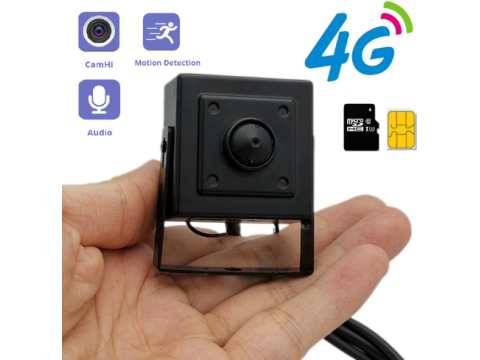Understanding GSM Surveillance Cameras
How GSM Cameras Work
GSM cameras are designed for basic surveillance tasks, primarily capturing still images rather than streaming video. They integrate:
- A surveillance camera
- A motion detector
- A GSM module for image transmission
Upon detecting motion, these cameras take snapshots and send them via MMS or email to the owner. This makes GSM cameras ideal for locations like homes or dachas where internet connectivity may be limited.
Key Features of GSM Cameras
Wide Viewing Angles
- Defined by the lens focal length, ensuring maximum area coverage.
Backup Power
- Built-in batteries keep the camera functional during power outages.
Infrared (IR) Night Vision
- Essential for areas without regular lighting, like dachas.
Additional Features
- Resolution selection
- SMS alerts for low battery
- Memory card support
- Remote management via cloud services
Applications of GSM Cameras
1. Home Security
GSM cameras are an affordable and straightforward solution for protecting homes. They are effective for capturing unauthorized access attempts in real time.
2. Dacha Monitoring
These cameras are widely used in dachas to monitor property during periods of absence. Devices like the Photo Express GSM are tailored for such purposes.
3. Motion Detection
Equipped with infrared motion sensors, GSM cameras capture images only when movement is detected, conserving power and storage.
Limitations of GSM Technology
Snapshot-Based Monitoring
- GSM cameras send still images, not video streams.
Latency
- Sensors may delay image capture, allowing intruders to move out of frame.
Network Dependency
- Functionality relies on stable GSM coverage from cellular providers.
Introduction to 3G Surveillance Cameras
Advancements Over GSM
Unlike GSM, 3G cameras transmit live video streams via internet connectivity. Features include:
- Real-time monitoring via smartphones or computers
- Integration with cloud services for video storage
- Basic functionalities like video calls
Applications
- Remote Surveillance: Monitor property from anywhere with internet access.
- Live Updates: Real-time alerts and visual feeds via connected apps.
Cost Considerations
- Internet data charges for 3G-based surveillance depend on provider rates for SMS, MMS, and video streaming.
Outdoor GSM and 3G Cameras
Challenges of Outdoor Use
Environmental Factors
- Outdoor GSM cameras require additional protection, like weatherproof housings and infrared lighting.
Power Supply
- Dependence on external or backup power systems for sustained operations.
Optimized Usage
For outdoor monitoring:
- Opt for 3G cameras with advanced IP ratings for weather resistance.
- Utilize solar-powered options for areas lacking stable power sources.
Conclusion
While GSM cameras are suitable for basic monitoring, especially in remote or standalone locations, 3G cameras offer enhanced functionality for real-time video streaming. The choice depends on specific needs, budget, and location requirements. For comprehensive surveillance, combining GSM and 3G cameras with cloud services can ensure maximum security and convenience.

